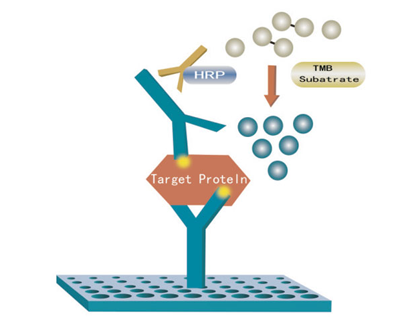in
Elisa kitIn operation, we all think that the principle of the ELISA experiment seems to be very simple—just fixing antigens, adding primary and secondary antibodies, and then using a substrate with washing and blocking steps. However, even the most basic steps like washing and sealing can significantly impact your results if not done properly. At the end of the day, the quality of your data depends largely on the signal-to-noise ratio. A high background noise can make it difficult to interpret your results accurately. Here are some tips to help you reduce background in your ELISA experiments.
 First, washing is crucial
First, washing is crucialAlthough washing may seem like a repetitive task, it plays a vital role in reducing background noise. If unbound materials such as non-specifically bound antibodies or detection reagents remain in the microplate, they can contribute to unwanted signals. To improve this, consider increasing the salt concentration in your wash buffer, which helps prevent non-specific binding. If you notice high background, try increasing the number of washes. This small change can have a big impact on your results.
Second, proper blocking is essential
The purpose of the blocking solution is to fill any remaining binding sites on the microplate so that non-specific interactions don’t occur. This helps ensure that only the target antibody binds to its antigen. If your background is too high, try using a higher concentration of blocking agent or extending the incubation time. There are two main types of blocking solutions: protein-based and non-ionic detergents. Each has its own advantages and limitations depending on your specific setup. For example, Tween-20 is commonly used because it’s cost-effective and stable, but it doesn't stay on the plate permanently. So, it should also be included in your wash buffers at low concentrations (typically 0.01–0.1%) to avoid interfering with specific binding.
Protein-based blocking agents like BSA, skimmed milk, or normal serum can provide more permanent coverage by binding to the surface and stabilizing the immobilized antigens. However, these can sometimes interact with certain antibodies, especially those that bind to IgG or Protein A. To avoid this, you might opt for species-specific sera, such as chicken or fish serum, which can minimize cross-reactivity.
Third, optimize antibody concentrations
It's easy to follow standard protocols, but slight variations in reagents can require adjustments. Using too much primary or secondary antibody can lead to increased background due to non-specific binding. Always test different concentrations to find the optimal balance between sensitivity and specificity.
Fourth, use detection reagents wisely
Overuse of detection reagents can cause excessive background. Make sure you dilute them correctly and avoid overexposure. Also, pay attention to when you add the stop solution—it can greatly affect the final signal. If you're still struggling with high background, take a step back and systematically check each component of your ELISA system. With careful optimization, you’ll likely see significant improvements in your results soon.
Silicone fiberglass sleeve is a type of protective sleeve made from acombination of silicone rubber and fiberglass. It is designed to provideinsulation, heat resistance, and abrasion resistance to wires, cables,hoses, and other components.
Braided Glass Fiber Sleeve
Dongguan Liansi Electronics Co.,Ltd , https://www.liansisleeve.com